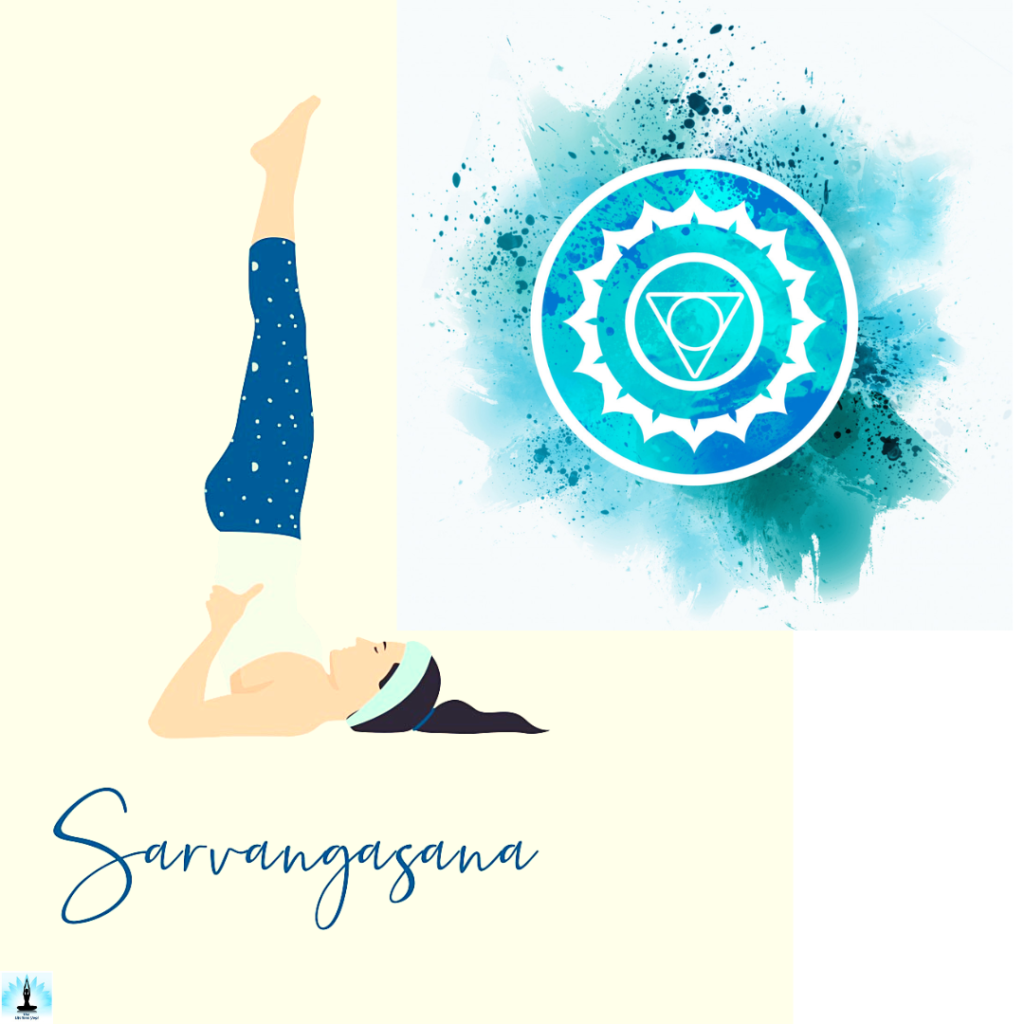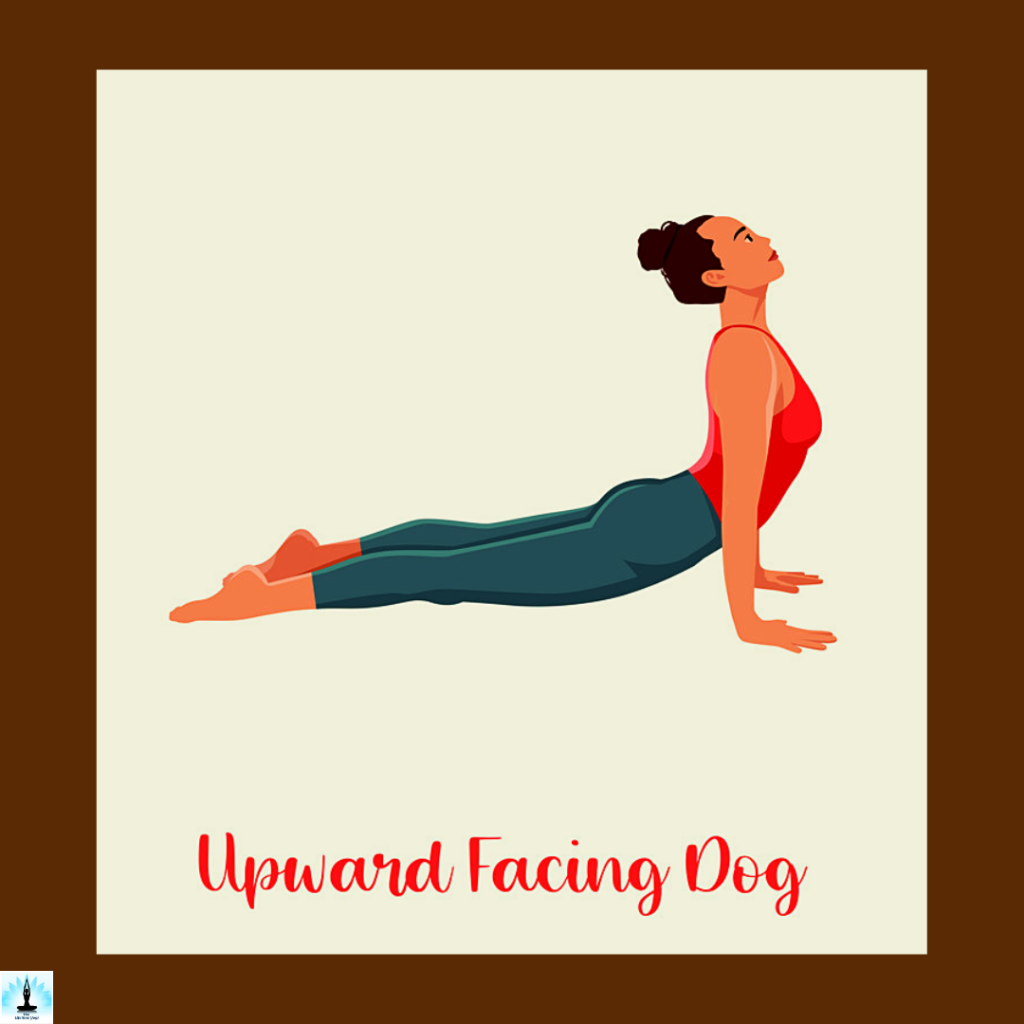Introduction – 9 Top Benefits of Sarvangasana | Step-by-Step Instructions of Sarvangasana
Sarvangasana, commonly known as the shoulder stand pose, is a foundational asana in the practice of yoga. This inverted pose holds profound physical, mental, and spiritual benefits that contribute to overall well-being. As we explore the depths of Sarvangasana, we’ll delve into its step-by-step execution, the anatomical benefits it offers, its impact on mental health, and its role in spiritual growth.

Table of Contents
The Yogic Philosophy of The Sarvangasana
Sarvangasana, commonly known as the shoulder stand pose, holds a significant place in yogic philosophy, reflecting the union of the body, mind, and spirit. In Sanskrit, “Sarvanga” translates to “all limbs” or “whole body,” emphasizing the holistic nature of this pose.
Yogic philosophy views the body as a vessel of energy, and Sarvangasana is believed to enhance the flow of prana (life force) throughout the entire body. This inversion symbolizes a shift in perspective, encouraging practitioners to see the world from a different angle and fostering mental clarity.
Which Chakra is Activated by Practicing Sarvangasana?
Practicing Sarvangasana, or the shoulder stand pose, is closely associated with the activation of the Vishuddha chakra. The Vishuddha chakra, also known as the throat chakra, is positioned at the throat region and is believed to govern communication, self-expression, and the purification of thoughts and actions.

In Sarvangasana, as the body is inverted and the weight is supported on the shoulders, there is a focused engagement of the neck and throat area. This physical activation aligns with the energy flow associated with the Vishuddha chakra.
Top Benefits of Sarvangasana
Sarvangasana, or the shoulder stand pose, is a dynamic yoga asana with numerous physical, mental, and emotional benefits:
Improves Circulation:
By reversing the flow of blood, Sarvangasana enhances blood circulation, particularly to the brain. This is believed to rejuvenate the nervous system and improve overall vitality.
Thyroid Stimulation:
The pose involves placing pressure on the thyroid glands, which can help regulate metabolism and contribute to the well-being of the endocrine system.
Strengthens Shoulders and Neck:
As the body is supported on the shoulders, Sarvangasana strengthens the muscles in the shoulders and neck, promoting better posture and reducing stiffness.
Calms the Nervous System:
Inversion poses have a calming effect on the nervous system. Sarvangasana, when practiced mindfully, can help alleviate stress and anxiety.
Enhances Respiratory Function:
The expanded chest in this pose allows for deeper breaths, enhancing respiratory function and promoting lung health.
Stimulates Digestive Organs:
The compression and release in the abdominal region stimulate digestive organs, aiding in digestion and relieving minor digestive issues.
Reduces Fluid Retention:
Sarvangasana may help in reducing swelling or fluid retention in the legs by encouraging lymphatic drainage.
Boosts Energy and Alleviates Fatigue:
Regular practice is thought to reduce fatigue, improve energy levels, and promote a sense of well-being.
Balances Hormones:
The inversion and pressure on the thyroid and parathyroid glands contribute to hormonal balance in the body.
Step-by-Step Instructions of Sarvangasana
Sarvangasana, or the Shoulder Stand Pose, is a rejuvenating inversion that requires proper alignment and mindful practice. Here is a step-by-step guide to help you perform this pose safely:
Preparation:
Lie on your back with your arms along your sides and palms facing down. Relax in Corpse Pose (Shavasana) for a few breaths.
Inhale and Lift Legs:
On an inhalation, engage your abdominal muscles and lift your legs off the floor, bringing them to a vertical position. Support your lower back with your hands and elbows on the mat.
Straighten Spine:
Continue to lift your legs, bringing them over your head. Keep your spine straight, and avoid any twisting or turning. Support your back with your hands, keeping your elbows close together.
Adjust and Align:
Walk your hands down your back toward the shoulder blades, lifting your torso higher. Maintain a straight line from your shoulders to your toes. If needed, adjust your hands to provide stability.
Relax Shoulders:
Broaden your shoulders and relax them away from your ears. Keep your neck long, avoiding excessive pressure on the cervical spine.
Hold and Breathe:
Hold the pose for 30 seconds to a minute, breathing deeply. Ensure that your weight is evenly distributed across your shoulders, and avoid any discomfort in the neck.
Exit the Pose:
To release, slowly lower your legs back over your head, returning to the mat one vertebra at a time. Once your legs are on the floor, extend them and rest in Corpse Pose for a moment.
Advance Variations of Sarvangasana
Once you have mastered the basic Shoulder Stand Pose (Sarvangasana), you may explore advanced variations to deepen your practice. However, it’s crucial to approach these variations gradually and with proper guidance. Here are a couple of advanced options:
Eka Pada Sarvangasana (One-Legged Shoulder Stand):

From Sarvangasana, slowly lower one leg towards the floor behind you while keeping the other leg vertical. This variation challenges your balance and strengthens your core.
Parsva Sarvangasana (Sideways Shoulder Stand):

In this variation, you turn your torso to the side while maintaining the support of your hands on your back. This lateral movement adds an extra dimension to the pose and increases flexibility.
Niralamba Sarvangasana (Unsupported Shoulder Stand):

For those with a strong foundation, this variation involves removing the hands from the back and extending the arms parallel to the floor. This intensifies the challenge on the core and requires greater stability.
Padmasana in Sarvangasana (Lotus in Shoulder Stand):

After coming into Sarvangasana, you can bring one or both legs into Lotus Pose, where you cross your legs and place each foot on the opposite thigh. This demands flexibility and balance.
Poses Related to Sarvangasana
Sarvangasana, or Shoulder Stand Pose, is a foundational inversion in yoga that provides numerous benefits for the body and mind. Several related poses complement and enhance the effects of Sarvangasana in a well-rounded practice. Here are some poses that can be incorporated:
Preparatory Poses of Sarvangasana

Halasana (Plow Pose): Following Sarvangasana, transition into Halasana by lowering your feet behind your head to touch the floor. This pose further stretches the spine, shoulders, and hamstrings.

Setu Bandhasana (Bridge Pose): Before moving into Shoulder Stand, Bridge Pose can be an excellent warm-up. It strengthens the legs, opens the chest, and engages the core.
Follow-up Poses of Sarvangasana

Matsyasana (Fish Pose): As a counterpose to Sarvangasana, Fish Pose involves arching the back and lifting the chest. It provides a gentle stretch to the neck and throat and helps balance the energy flow.

Viparita Karani (Legs Up the Wall Pose): This restorative inversion is beneficial for relaxation. It involves lying on your back with legs extended up a wall, promoting circulation and reducing stress.

Urdhva Mukha Svanasana (Upward-Facing Dog): Combining the backbend of Upward-Facing Dog with the inversions in Sarvangasana creates a balance of strength and flexibility in the spine.
Therapeutic Applications of Sarvangasana
Sarvangasana, or the shoulder stand pose, offers a myriad of therapeutic benefits that extend beyond the physical realm. This inversion is known to have a soothing impact on the nervous system, making it an effective practice for individuals dealing with stress, anxiety, or mild depression.
By improving blood circulation to the brain, Sarvangasana helps alleviate mental fatigue and promote mental clarity. Additionally, its positive influence on the thyroid gland can aid those with thyroid-related issues. The pose’s capacity to stimulate the Vishuddha chakra, associated with self-expression, may also contribute to emotional healing and a sense of balance.
Beginner’s Tip of Sarvangasana
For beginners venturing into Sarvangasana, the key lies in gradual progression and careful attention to alignment.
Start by practicing with props like blankets or blocks to support the shoulders, creating a stable foundation.
Focus on engaging the core muscles to lift the legs and torso, and maintain a straight line with the spine.
Beginners should avoid sudden movements and prioritize proper breathing throughout the pose.
Contraindications and Cautions of Sarvangasana
While Sarvangasana offers numerous benefits, it is essential to be aware of its contraindications and exercise caution, particularly for individuals with specific health conditions.
People with neck injuries, cervical spine issues, or high blood pressure should approach this pose with care or avoid it altogether.
Pregnant women, especially in the later stages, are advised against practicing Sarvangasana due to the pressure it may exert on the abdomen.
Those with eye problems, like glaucoma, should refrain from prolonged inversion.
As with any yoga practice, individuals with health concerns should consult with an experienced yoga instructor before attempting Sarvangasana to ensure it aligns with their specific needs and limitations.
Frequently Asked Questions (FAQs) on Sarvangasana (Shoulder Stand Pose):
1. Is Sarvangasana Suitable for Beginners?
Sarvangasana can be challenging for beginners due to the inversion and neck involvement. It’s advisable to learn it under the guidance of an experienced yoga instructor to ensure proper alignment and safety.
2. Are There Any Precautions for Individuals with Neck Issues?
Yes, individuals with neck problems, such as injuries or cervical spine issues, should approach Sarvangasana with caution. Consulting a healthcare professional and a qualified yoga instructor is essential before attempting the pose.
3. Can Sarvangasana Help with Insomnia?
Sarvangasana, when practiced regularly, is believed to have a calming effect on the nervous system and may contribute to better sleep. However, individual responses vary, and it’s essential to maintain a consistent practice for potential benefits.
4. How long should one hold Sarvangasana?
Beginners may start with shorter durations, such as 30 seconds to a minute, gradually increasing the time as strength and comfort in the pose develop. Advanced practitioners may hold it for several minutes.
5. Is It Safe to Practice Sarvangasana During Menstruation?
Women are generally advised to avoid inverted poses during menstruation. It’s recommended to skip Sarvangasana during this time and choose more grounding and restorative poses.
6. Can Sarvangasana Be Practiced by Individuals with High Blood Pressure?
Individuals with high blood pressure should approach Sarvangasana with caution. It’s advisable to consult a healthcare professional before attempting the pose, and those with hypertension may need to modify or skip the pose.
7. What Are the Benefits of Sarvangasana for The Thyroid Gland?
Sarvangasana is believed to stimulate the thyroid gland, potentially improving thyroid function. The inverted nature of the pose may enhance blood circulation to the neck region, where the thyroid gland is located.
Conclusion
Sarvangasana stands as a testament to the holistic nature of yoga, addressing physical, mental, and spiritual aspects of well-being. Integrating this powerful pose into your yoga routine can lead to transformative effects on both body and mind. As with any yoga practice, it is essential to approach Sarvangasana with mindfulness, respect for your body’s limits, and, if necessary, under the guidance of a qualified yoga instructor. Unlock the potential of Sarvangasana and elevate your yoga journey to new heights.
References
- Francina, Suza (23 March 2003). Yoga and the Wisdom of Menopause: A Guide to Physical, Emotional and Spiritual Health at Midlife and Beyond. HCI. p. 233. ISBN 978-0-7573-0065-3.
- ^ Norberg, Ulrica; Lundberg, Andreas (8 April 2008). Hatha Yoga: The Body’s Path to Balance, Focus, and Strength. Skyhorse Publishing. p. 106. ISBN 978-1-60239-218-2.
- Acott, Ted S.; Cramer, Holger; Krucoff, Carol; Dobos, Gustav (2013). “Adverse Events Associated with Yoga: A Systematic Review of Published Case Reports and Case Series”. PLOS ONE. 8 (10): e75515. doi:10.1371/journal.pone.0075515. ISSN 1932-6203. PMC 3797727. PMID 24146758.
- ^ Penman, Stephen; Stevens, Philip; Cohen, Marc; Jackson, Sue (2012). “Yoga in Australia: Results of a national survey”. International Journal of Yoga. 5 (2): 92–101. doi:10.4103/0973-6131.98217. ISSN 0973-6131. PMC 3410203. PMID 22869991.
